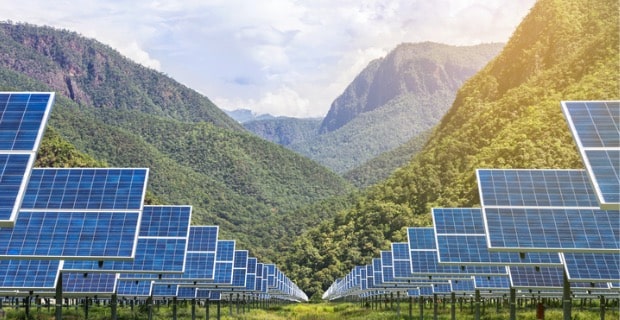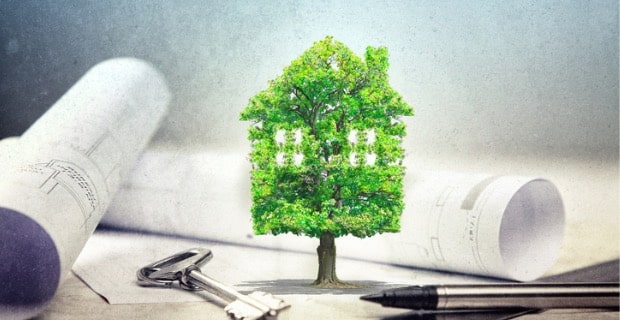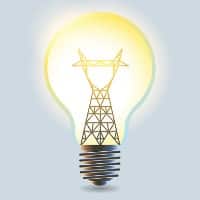Experts are predicting a bright year ahead for Australia’s solar energy sector. New 2018 solar projects and the latest technology are building on the successes of 2017.
The government-funded Clean Energy Finance Corporation is at the head of these new 2018 solar projects. They will fund forecasting technology designed to predict unexpected dropouts of energy.
2018 will see more investment and more projects. Energy Matters examines the issue and looks at what it will mean for Australian households and small businesses.

Large-scale clean 2018 energy projects
The Clean Energy Finance Corporation (CEFC) is a specialist clean energy financer. It invests in projects with the strongest potential for decarbonisation. These include low carbon electricity, such as solar, wind, battery storage and bioenergy.
Last year saw several large-scale solar projects kick off across Australia. Interviewed in The Global Trade Review, Gloria Chan, head of large-scale solar at CEFC, said projects are now attracting interest from commercial banks and contractors. They are eager for a slice of the pie in one of the world’s sunniest countries.
“Twelve months ago there were still no projects financeable on a commercial basis,” she said. “Now we’ve financed 10 projects worth $370 million in debt finance. These are with 400 MW of total AC capacity, and about $900 million of project value. Commercial banks can look at it and say: ‘It works with the offtake agreement put in there.’ We’re at a tipping point for large-scale solar in Australia to become readily financeable.”
Breakthrough year for solar farms
Of the 2018 solar projects, the CEFC is increasing its commitment to the 80 MW Oakey Solar Farm in south-east Queensland. It is an investment that will also use new technology to improve grid stability and energy reliability.
CEFC is going to commit $55 million in debt finance to Oakey 2, the 55 MW second stage of the Oakey Solar Farm. The investment builds on the CEFC’s earlier commitment of $19.5 million for the nearby 25 MW Oakey 1 development. This is already under construction.
When completed, the combined 80 MW Oakey projects should deliver enough renewable energy in Queensland to power around 24,000 homes.
According to Gloria Chan, “Equity sponsor Foresight Solar Fund Limited will collaborate with the Australian Energy Market Operator (AEMO). They will install suitable five-minute forecasting technology. This can assist AEMO enhance grid stability as Australia transitions to higher penetration of renewables.”

What forecasting technology means for your household
As AEMC explains, these new investments will also fund forecasting technology. Forecasting technology predicts unexpected dropouts in generation. So this allows grid operators to make a more certain plan for how much energy will be delivered, and when.
Forecasting mixes domain data, information from sensor networks and local weather stations. It also uses data from sky cameras and satellite observations.
“IBM’s system combines predictions from a number of weather models with geographic information and other data to produce the most accurate forecasts – from minutes to weeks ahead,” explains Dr Siyuan Lu, Physical Analytics Researcher at IBM.
This helps deliver reliable solar energy to the grid. Residential solar power is “intermittent generation”. This means that it is a form of power that cannot control when it is supplied into the grid, due to changing weather conditions.
Dispatchable energy explained
Dispatchable energy is available when consumers most need it. It includes dispatchable generation (coal, gas, hydro) and storage (batteries, pumped hydro), as well as dispatchable load. For example, when an aluminium smelter reduces its consumption, or other types of demand response to reduce the pressure on the grid.
Variable, intermittent generation sources, such as wind and solar, are not dispatchable. This is because they may not be available if the wind isn’t blowing or sun isn’t shining. Battery storage, such as the mega battery in SA, helps solve the issue of intermittency in wind and solar. This is because it feeds energy into the grid on demand.
Reliability of the electricity system is maintained through having a certain level of dispatchable energy available at all times.
More large-scale 2018 solar projects from the CEFC
Apart from the Oakey solar farms, the CEFC is developing other large-scale solar projects. They all take advantage of Australia’s natural advantage in solar.
It’s developing Australia’s first fully integrated wind solar and battery project. The venue is Kennedy Energy Park in central north Queensland. The facility should cost around $94 million.
The Bannerton Solar Park at Almas Almonds in the Sunraysia district of Victoria will cost $98 million. The 88MW solar park should generate enough supply to power 100,000 homes. It has secured a contract with the Victorian Government to supply power to Melbourne’s tram network.
What is demand response?
Demand response is all about consumers making informed choices about the quantity and timing of their electricity use.
In the national electricity market, the supply side of the market provides electricity at the wholesale price. On the demand side, consumers have an opportunity to change their electricity consumption if the price exceeds the value they gain from consumption.
By actively participating in the market through such options, demand for electricity services is efficiently met through the lowest cost combinations of demand and supply side options.
It looks like these projects and new advances in technology will be delivering more efficient energy to Australians in the near future.












































